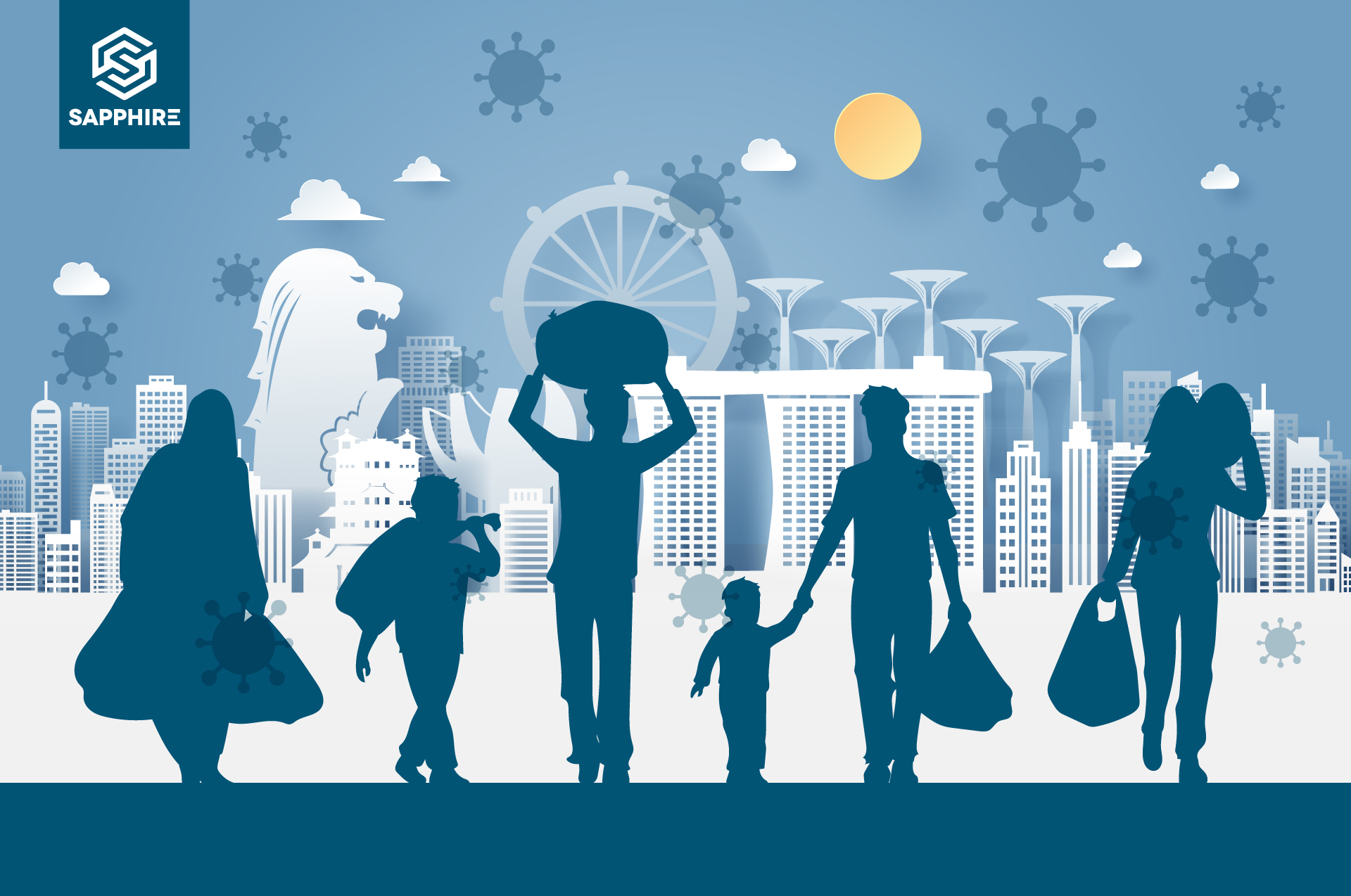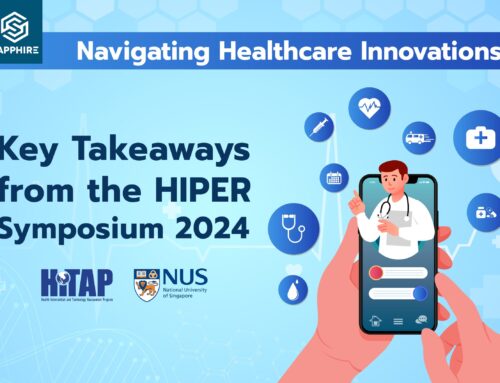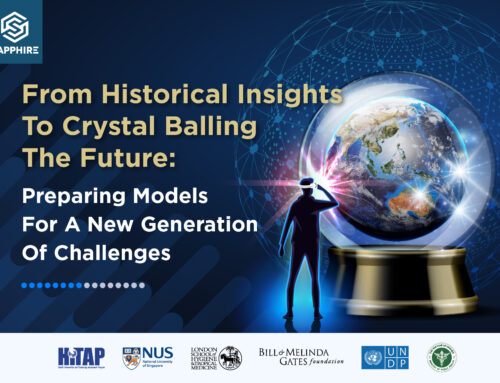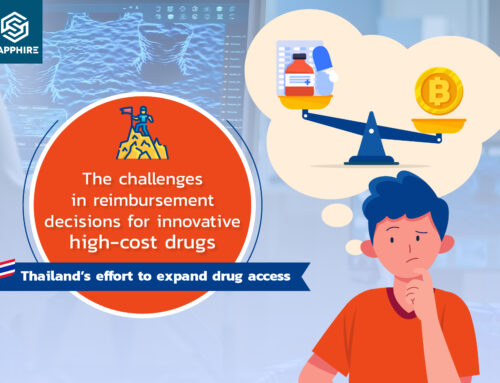
As many countries in Asia, and the world, are currently experiencing another surge of COVID-19 cases, we summarise a discussion between representatives from Singapore and Thailand on addressing COVID-19 among migrant communities, held earlier this year.
COVID-19 has devastated communities across the world, some more than others. Social inequalities related to employment, housing, income level, nationality, social location, all affect health outcomes. With that in mind, viruses such as COVID-19 tend to have a disproportionate impact on marginalised communities such as migrants [1]. Migrants may refer to those living in a different location “within a country or across an international border, temporarily or permanently, and for a variety of reasons” [2]. A significant number of migrants around the world reside in crowded environments with inadequate levels of hygiene [3]. This situation provides optimal conditions for a virus such as the SARS-CoV-2 to spread rapidly. In Singapore, most of the COVID-19 cases were concentrated among migrants [4] and with Thailand’s second wave being heavily linked to migrant communities, members of the Thai Ministry of Public Health sought to gain an insight from the Singapore experience. A meeting was therefore convened on the 29th of January 2021 as a knowledge-sharing opportunity for colleagues in Thailand to learn about how Singapore contained the COVID-19 outbreak in migrant worker populations.
Dr. Surakameth Mahasirimongkol from the Thai Department of Medical Sciences kicked-off the meeting with a presentation on the current context in Thailand. He explained that Samut Sakhon is a province bordering Bangkok, and, with a large seafood industry, it is a hotspot for migrant workers. The province experienced a surge of COVID-19 cases, and between 18th December 2020 and 10th January 2021, there were 3,441 positive cases. At the time of the meeting, a mass-testing initiative detected roughly 20,000 positive cases, most of them being asymptomatic.
Dr. Panithee Thammawijaya from the Department of Disease Control, Thailand and Dr. Surakameth then posed questions to the team in Singapore regarding testing, quarantine approaches, and vaccines. Dr. Hsu Li Yang from the National University of Singapore was asked on the type of anti-body testing they used, and what criteria was used to select the anti-body test. Dr. Li Yang explained that during this period, Singapore tested 10 different types of anti-body tests before settling on one. Given the high incidence and prevalence, the team favoured sensitivity (e.g. the ability to correctly identify patients with a disease) over specificity (e.g. the ability to correctly identify people without the disease). He explained that when the outbreak started, Singapore used Polymerase Chain Reaction (PCR) tests for mass testing but experience taught them to use a mixed approach of using both, anti-body tests and PCR tests. This approach involved conducting an anti-body test for every worker, and, if found to be positive, a PCR test would not be required. If, on the flip side, they tested negative for anti-bodies and never had a positive PCR test, the individual would be tested every two weeks. Dr. Li Yang discussed the need to be pragmatic and with a limited testing capacity and the higher cost of PCR tests, it was decided to not use PCR tests for asymptomatic individuals.
Singapore also set up quarantine facilities and step-down facilities; the latter is a care provision with recovering patients that are moved out of hospital to free up hospital beds. These provisions were a way of preventing hospitals getting overwhelmed. However, the quarantine and step-down facilities soon became full. Three to six individuals would be quarantined together for 14 days and if one test came back positive on day 14, all six individuals would have to stay and start the cycle again. Given the lack of tourists, cruise ships, and hotels were converted into quarantine facilities to meet the demand. The government paid for the salary, food, and accommodation of the workers in the affected dormitories to try and halt the spread of the virus to the wider population.
Prof. Teo Yik Ying explained that given the large outbreak in this community, migrant workers were prioritised for COVID-19 vaccination in Singapore. When asked on the acceptability of this policy amongst the wider population, he explained that it was generally well-received given that there had been sufficient communication that there are enough vaccines for everyone in Singapore.
The meeting was greatly informative and Department of Disease Control team reiterated how helpful it was to learn about the mitigation strategies used in Singapore for tackling the current outbreak in Thailand. Knowledge-sharing meetings like this are crucial to enable people to access information that they may not have obtained otherwise. Moreover, it has highlighted the value of regional cooperation in fighting off the dreaded COVID-19 virus. Going forward, as mentioned by colleagues from Singapore, efforts need to be made to examine the mental health implications of the COVID-19 containment measures faced by migrant populations so that more can be done to mitigate these effects in future health crises.
Since the meeting, Thailand implemented a “Seal and Bubble” approach in Samut Sakhon to control the spread of COVID-19 in factories and such sites, drawing on the lessons from this discussion. See this link for more information: https://www.bangkokpost.com/thailand/general/2062703/factory-staff-to-be-monitored
Summary of meeting by Ms. Rachel Archer, Health Intervention and Technology Assessment Program (HITAP)
Date: 25 May 2021
References:
- International Organization for Migration. The impact of COVID-19 on migrants. Migration Factsheet No. 6. Available from: https://www.iom.int/sites/default/files/our_work/ICP/MPR/migration_factsheet_6_covid-19_and_migrants.pdf
- International Organization for Migration. Who is a migrant? 2021. Available from: https://www.iom.int/who-is-a-migrant
- Koh D. Migrant workers and COVID-19. Occupational and Environmental Medicine 2020;77:634-636.
- World Health Organization. The migrant worker whose COVID-19 story inspired Singapore. 2020. Available from: https://www.who.int/singapore/news/feature-stories/detail/the-migrant-worker-whose-covid-19-story-inspired-singapore



